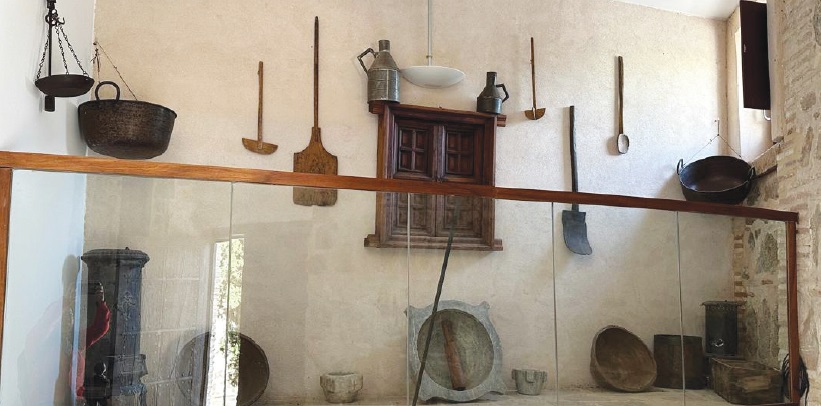Tracing the footsteps of the Arabs in Spain
A reminder to self: when they say it’s hot in Spain, it is blisteringly HOT.
Aug 16, 2024

Getting Sidetracked- Agnes Ong
A reminder to self: when they say it’s hot in Spain, it is blisteringly HOT.
And there’s plenty of wisdom in staying in the shadows or just getting out of the sun when it is at its peak at midday.
Heatstroke is a genuine concern in these conditions. I had a few challenging days in Cordoba when temperatures soared past 40 degrees Celsius. It was a stark reminder of the importance of staying hydrated and seeking refuge in the calm oasis of my air-conditioned room.
That was my reality when I rode the tracks from Cordoba to Seville, continuing my quest to trace the Arabs’ influence in Spain through its cultural artefacts.
Traipsing through Valencia, Granda and Cordoba
With my less-than-seven kg backpack, I embarked on a one-month odyssey to trace the Arab influence in Spain over eight centuries. My fascination with the Islamic civilisation in the Iberian Peninsula, which sparked during my teenage years, had kindled a deep desire to experience the romanticism of the Arabs’ legacy in Spain firsthand. This personal connection fuelled my journey.
I started my journey at Valencia and learnt the origins of the beloved national dish, the paella, and the Arabs ingenuity in taming the land. Then, I moved on to Granada and was utterly captivated by the breathtaking beauty of the Al-Hambra and the Generalife, the Albaycin, and the haunting wails of the gypsy flamenco music, as well as the haunting story of the end of the Nasrid dynasty.
My travels then took me to Cordoba, where I was fortunate to witness the annual La Fiesta de los Patios de Córdoba, a UNESCO Intangible Cultural Heritage of Humanity that celebrates the most beautifully decorated courtyards in the city. While in Cordoba, I also had the privilege of visiting the exquisite Mezquita of Cordoba, or Mosque-Cathedral of Cordoba, another UNESCO World Heritage Site, and a few other jewels of architecture such as the Alcazar de los Reyes Cristianos (The Alcazar of the Christian Monarchs) and those of the Umayyad state such as the Baños del Alcazar Califal.
Seville
Plenty of stories about the Gothic-built, UNESCO World Heritage Site Cathedral and its architecture exist. The only son of Christian monarchs, Ferdinand II of Aragon and Isabella I of Castille, was baptised here. Royals and famous explorers are also buried in the Cathedral. One such tomb belonged to Christopher Columbus and his son, Diego Columbus.
Nearby the Cathedral is the Giralda, a tall minaret where the imam used to ride a donkey up the tower to call the faithful to prayers five times a day. When the Christians took over the city, the Muslim minaret transitioned to be a church bell tower. Today, tourists can walk up inside the minaret to reach the top for a panoramic view of the city.
The Alcazar, another UNESCO World Heritage Site, is a testament to the city’s diverse history. It began as an Islamic citadel and evolved into a palace still used by the Spanish royal family. The complex is a unique blend of Islamic, Gothic, Baroque, and Renaissance influences, offering a fascinating glimpse into the city’s past.
Toledo
My journey through Spain culminated in Toledo, a city that captivates with its unique charm and rich history. It's a place that I’ve returned to time and again, drawn by its distinct character and the echoes of its past.
Toledo, located barely an hour’s ride from Madrid, is a city where the pace of the evenings slows down tremendously, offering a relaxing contrast to the bustling day tourists.
The first time I arrived at Toledo, I was hitting on empty energy. Being a typical Asian, I had hit the ground running, trying to cram as many sights and experiences as possible. I was spent by the time I arrived at Toledo for the first time in mid-October. Having missed properly visiting Toledo for the first time, I was back in the city six months later.
Toledo was the poster child for religious tolerance under Islamic rule, and this is most evident in the buildings that have withstood the test of time. There’s the Islamic Cristo de la Luz Mosque, with its Islamic elements and decorative details, the exquisite Synagogue of Sana Maria la Blanca, the jaw-dropping El Transito Synagogue, and the ever-popular Santa Iglesia Catedral Primada de Toledo.
The city’s streets, intentionally designed by the Arabs to confuse invaders, are a testament to Toledo’s rich history. This clever survival strategy adds a layer of intrigue to the city’s charm, inviting one to explore its secrets.
And the sweets! This is the city for those who have sweet tooth. The nuns at the nondescript Convent of San Clemente have been baking the most delicious marzipans since 1212, and their recipe is famous worldwide.
All too soon, my month-long journey tracing the legacy of the Arabs in Spain ended. It was a dream come true, and I felt very privileged to have been able to spend the time discovering and learning about the profound impact the Arabs had on Spain. The beauty of the landmarks and art left me in awe.
(Agnes Ong is a self-professed curious traveller and lifelong learner with a lamentable tendency to get into sidetracked experiences. She aspires to explore as many historical UNESCO sites as possible, funds permitting. Agnes has a travel-slash-work-slash-dump everything IG at @agnes_gets_sidetracked.)







Total Comments:0